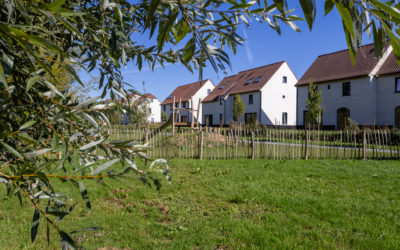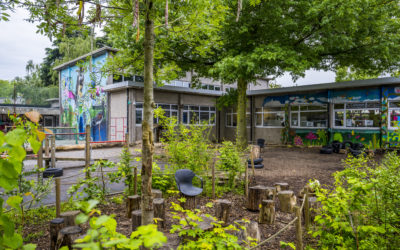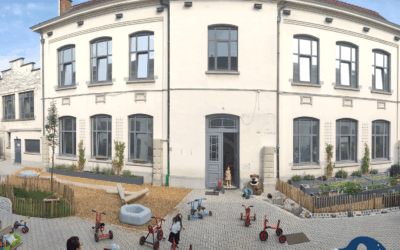IPON develops construction projects in which greenery and biodiversity are structurally and legally embedded, so that every resident actively contributes to a sustainable living environment.
Hasselt PXL campuses
The project
Hasselt University PXL, with 10,000 students and several campuses, is strongly committed to biodiversity and sustainability. The policy plan of the university college includes sustainability in all policy areas, so also in the facilities management of the various campuses. More specifically, it states the following objective: PXL University College turns all its campuses into lively state-of-the-art campuses with attention to climate- and energy-neutral buildings, green energy, sustainable mobility, greening, blackening, air quality, healthy noise levels, biodiversity, where there is room for campus life, community development, social and spatial interweaving with the city and region.
We are softening outdoor space, minimising paved surfaces, contributing to healthy water management, greening campuses and biodiversity in general.
Hogeschool PXL is currently an SDG champion and in time aims to become an SDG ambassador.
The campus in Diepenbeek acts as a living lab where buildings and the environment are used for research and education.
Intensive work on biodiversity is done within the Green Management course. PXL has long had an adapted mowing policy and no longer uses pesticides. This policy is structurally embedded in the college’s operations.
The university applies the ‘teach as you preach’ principle and is working on ambitious plans for the future. A new master plan, with implementation by 2028/2029, will make the campuses in Diepenbeek and Hasselt more traffic-free, reduce paving and ensure better water management. This plan is currently in the preparation phase.
The project currently entails in Hasselt 12 buildings with net infrastructure area of 7.2 ha and 13.9 ha of site area. In Diepenbeek 1 building and 4.85 ha site area.
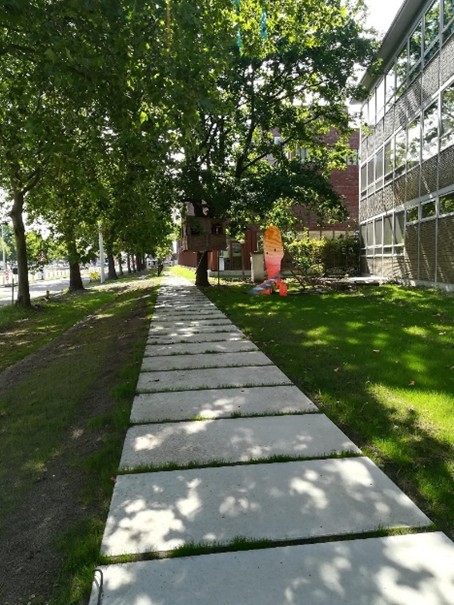
Project location
Contribution(s)
Project costs
Participant(s)
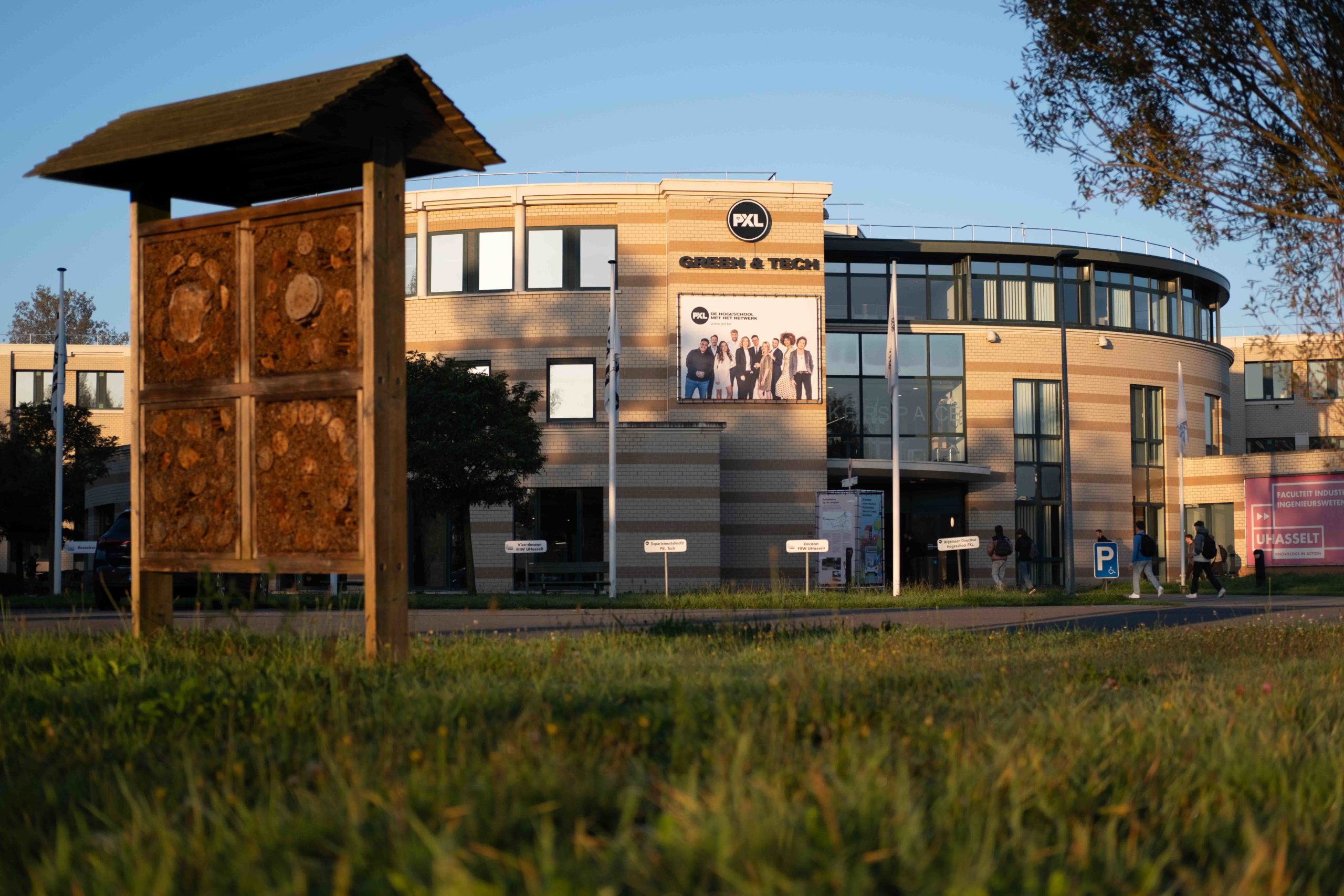
Campus administrators, department head(s), director of facilities services, researchers, professors and students
How are the criteria of the objective met?
Buildings and infrastructures
- As little alteration of the initial landscape as possible /as much naturalness as possible to replace grey and concrete surfaces (e.g. green roofs and walls, greening the surroundings, incorporating the existing landscape into the infrastructure).
- Use native species/subspecies that are more resilient and resistant to climate change, if appropriate
- Incorporate elements that are suitable for the local biodiversity
- The Greenovation project on the Hasselt campus is committed to softening and parking (essentially getting rid of the heat island that the campus still is today) with innovative water infiltration with permeable and semi-permeable soils with investments in innovative wadis as well as green facades and green roofs.
Possible initiatives in which the project is involved :
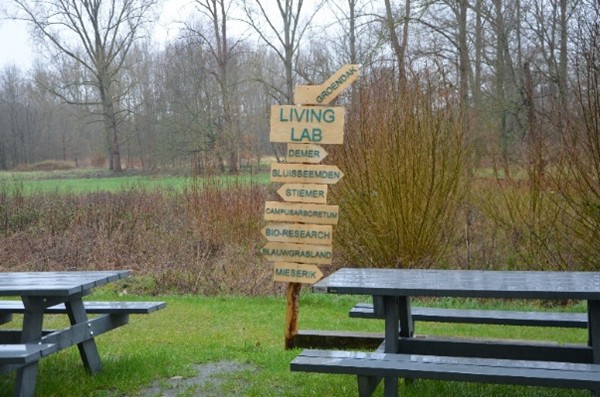
Long-term maintenance
Adapted mowing management, control of invasive species, ensuring adaptation to the building for native species e.g. bats, placing insect hotels a.o. for solitary bees,…
Furthermore, a tender for green maintenance has been done, this is based on an image quality plan …
Benefits
- Expanding green-blue network in and around cities
- Biodiversity research is one of the spearheads within PXL-Bio-reseerch, with themes including reducing invasive species and protecting the hazel mouse and hamster.
- Internationally, PXL is also putting itself on the map, including through its collaboration with Wageningen in the Biodiversity Challenge, in which the school was ranked third best in Europe in 2023.
- On the campuses, wildlife cameras are used for monitoring, with notable sightings such as beavers.
Other projects linked to the objective: "Buildings and infrastructures"
EcoSchools Antwerp
The city supports EcoSchools that focus on climate with coaching and a subsidy of up to 30,000 euros.
Opération Ré-création
Bringing nature into school playgrounds.
